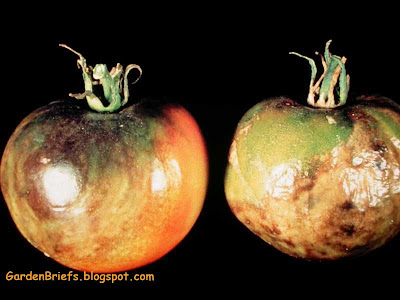
FLORIDA - Karin Fields of Fort Lauderdale is enthusiastic about the potential of her yard. She's not going for a fluffy, lush lawn. At least not in the usual sense. Instead, she's happily swapping out sections of grass for artichokes, broccoli and onions.
With established vegetable gardens already tucked in back of her house, Fields is adding fresh plantings in the front yard -- perfectly visible from the street.
"I'm putting [vegetables] in front for more people to see,'' she said. "When they're walking dogs at night, when they're driving by the house, they won't miss the garden. They'll stop and look and they'll ask questions. And they'll want to do it themselves.''
Fields, an organic gardening coach by profession, supports a movement to use residential yards more efficiently and productively. She's among those who regard ornamental grass lawns -- which need water and gas-powered mowers for beauty -- as environmentally wasteful.
"Instead of wasting [water] on grass, we're going to put it right into the garden to make the vegetables,'' she said.
Like Fields, many South Florida residents are giving edibles more attention within their landscaping.
"I think it's a real trend,'' said Gabriele Marewski, owner of Paradise Farms Organic in south Miami-Dade County, who speaks on the topic of edible landscaping at public events.
While much of her land produces organic fruits and vegetables for commercial use, Marewski said she's trading out an ornamental hedge on her property for a personal kitchen garden, complete with kale and mustard greens.
Various factors account for the emphasis on edibles, gardening experts say. High among them is a desire for fruits and vegetables that have fresh-picked flavor and are produced without synthetic fertilizers or pesticides.
"The awareness about organic gardening kind of renewed us to look at our yards and see where we could add something,'' said Diana Guidry of NatureScape Broward, a county program that promotes environmentally friendly landscaping.
Another draw, some suggest, is enjoying the outdoors, away from phones, Facebook and Twitter.
"To me, there's nothing more satisfying than being in nature,'' Marewski said.
Lance Gulseth of Hollywood isn't ripping out existing greenery, but when he replaced trees after Hurricane Katrina, he decided that any additions would be edible.
PICKING FRUIT
"I think it's just a nice feeling to walk in your backyard to pick mangoes or pick papayas or pick kumquats,'' Gulseth said. "It gives me a lot of enjoyment to have the yard producing, rather than [just] something that needs to be mowed every week.''
As a novice gardening enthusiast and former Arizona resident, Gulseth is delighted with the variety of food -- including bananas, basil and collard greens -- that's produced in his yard. Much of it, he said, requires relatively little effort and expense. He figures that this year he chowed down and shared about $120 worth of papayas from two trees started by simply tossing some extra seeds into a pot.
In addition to providing flavorful food, enthusiasts say, the variety of edible trees and plants offers the attributes of ornamental landscaping -- texture, color, shade and habitat for wildlife.
Fields said she's especially inspired by Fritz Haeg, a Los Angeles architect who's been a high-profile proponent for replacing traditional lawns with edible landscaping.
"He does it beautifully,'' she said. ``Instead of just a garden, he's turning it into a piece of art.''
For looks, Marewski's favorites include a cranberry hibiscus hedge. "It's gorgeous,'' she said. She tosses the lemon-flavored leaves in salads.
PRETTY PLANTS
Other aesthetically appealing edibles, Marewski said, include jaboticaba, mango and avocado trees. Rosemary makes a nice shrub. And lemon grass works well as a taller ornamental grass.
Another enthusiastic advocate of using organic edibles as landscaping is Desiree Fields (no relation to Karin), a trained master gardener volunteer with the University of Florida -- Broward County Extension Education Section.
Even the hedgerow, she said, looks similar to that of typical hedges in her urban Broward neighborhood. But hers produces such tasty treats as cherries, kumquats, plums and papayas.
Her method of trimming these fruit trees, she said, is specifically tailored to keeping them short and dense.
NOT MUCH WORK
Fields, a personal chef and organic garden designer, is eager to let fellow South Floridians know that when edible landscaping reaches a certain level of maturity and balance, there's minimal work. Basically, she said, her daily effort involves walking around her yard -- in a dress -- and harvesting.
Some of her favorites include strawberry guava, which produces a red fruit and offers dainty white flowers. The Barbados cherry provides her landscape with hot pink flowers with bright red cherries. Even her basil, Mexican sage and tarragon provide flowers. When food is bountiful, outdoor critters are likely to come and help themselves. That's fine, according to many edible enthusiasts. They're happy to share at least some of the bounty. In return, gardeners are treated to music and a show.
"I watch the birds,'' Marewski said. "It's my TV.''
from The Miami Herald












